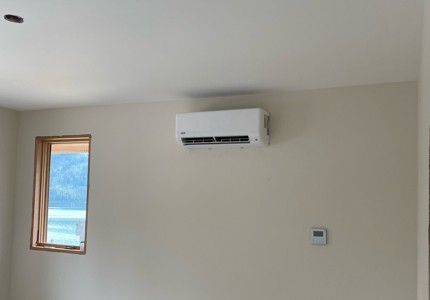An HVAC system plays an essential role in making your home comfortable. However, your HVAC installation is incomplete until you confirm that all the equipment has been correctly installed and that the system is functioning properly.
Thus, it is your HVAC professional’s responsibility to validate the correct installation of your HVAC system through HVAC commissioning.
Are you planning to install a new HVAC system or simply want to know if your current HVAC system was installed correctly? Continue reading as we walk you through the HVAC commissioning process and the key elements of the HVAC commissioning checklist.
What is HVAC Commissioning?
An HVAC commissioning can be likened to a “test run” or “systems check.” It involves testing, verifying, and fine-tuning the HVAC systems to ensure the best possible performance.
The commissioning can also be viewed as a quality assurance program designed to demonstrate that the HVAC unit was installed correctly and performed as intended.
When air conditioners, furnaces, air purification units, and heat pumps are installed, they are typically commissioned. This aids in ensuring that the units meet all of the required standards of operation as well as the owner’s expectations.
Types of Commissioning
There are three basic types of HVAC commissioning:
Initial Commissioning – This commissioning is the inspection of a newly installed or upgraded heating and cooling system to ensure it is 100% compliant with standard HVAC requirements and meets the owner’s needs.
Retro-commissioning – This is the examination of an old HVAC system that was not commissioned at the time of installation. This process entails inspecting and fine-tuning the HVAC system in preparation for repair or upgrade to ensure that it performs optimally and still meets the owner’s needs.
Recommissioning – Recommissioning is the process of re-evaluating an already-commissioned HVAC system. It entails analyzing a previously commissioned HVAC system to ensure that it still meets the required standards and the owner’s needs. It also includes making repairs or upgrades as needed.
The Commissioning Process
After installing an HVAC system, the commissioning engineer examines the HVAC system to confirm it was correctly installed. And to make the process simple and quick, the commissioning professional uses an HVAC commissioning checklist as a guide.
Here’s is a summary of an HVAC commission process:
Equipment Check
The first major step in the commissioning process is to inspect the heating, ventilation, and air equipment (such as the control system). It typically involves examining if the right materials were installed in the correct positions/locations. Next, the commissioning engineers prove and validate that the installation agrees with the manufacturer’s instructions.
Operations Check
The next move is to check the HVAC system’s operation. When the HVAC system starts up for the first time, every piece of equipment in the system must work as stated in the manufacturer’s start-up list.
The start-up, operation, and shut-down must be examined and documented. And any abnormalities observed during its operation should be noted and forwarded to the concerned contractor.
After completing the operations check, the commissioning engineer proceeds to the next step called TAB (Testing, Adjusting, and Balancing.)
Testing, Adjusting, and Balancing
Testing, Adjusting, and Balancing (TAB) estimates the HVAC water and airflow to ensure it aligns with the desired requirements. This process often requires the use of several instruments such as monitoring, sensors, and testers to ensure that the characteristics of the HVAC system are appropriate.
Testing, Adjusting, and Balancing are critical since they ensure that a building HVAC system is optimal in providing energy efficiency, comfort, and good indoor air quality.
This process also involves testing, measuring, and establishing performance standards. Examples of the activities involved are validating heat transfer execution, air balancing, measuring air & water volumetric flow rates, and regulating ventilation and air exchange rates.
What Makes A Good Commissioning Engineer?
-
A commissioning professional must know all that’s needed to configure an HVAC system to enable it to meet the required standard.
-
They must also be aware of all the products/tools required to configure the HVAC system and inspect it before it becomes active.
-
The engineer should also know all the requirements, including the U.S. Green Building Council LEED requirements, and state, national, and international construction standards and codes.
-
An HVAC commissioning process will usually take 60 to 90 minutes for a full system.
Benefits of HVAC Commissioning
Commissioning is a powerful tool because it can indicate whether or not the HVAC installer has completed the job. When done correctly, commissioning is extremely cost-effective and should ensure that the system is completely in compliance with standard HVAC regulations.
Other benefits of HVAC commissioning:
-
Reduces an installer’s liability.
-
Prevents premature Air conditioning breakdowns.
-
It is beneficial to whoever will be in charge of maintaining the system.
-
In the event of a breakdown, it assists the repairer in troubleshooting the system with less hassle.
-
In addition, it provides its owner with sufficient information on how its system works and knowledge of any issues it may have.
-
Ultimately, commissioning ensures that your HVAC system performs as expected, providing maximum comfort while operating at peak energy efficiency.
The HVAC Commissioning Checklist
An HVAC commissioning intuitive checklist guides the commissioning engineer through the process of inspecting, validating, and documenting the performance of the HVAC system after installation. This checklist will typically include the project’s name, the names of the HVAC contractors, the installer’s name, and the inspector’s or commissioning engineer’s name.
The key elements of the commissioning checklist include;
-
Variable Air Volume (vav) terminals
-
Heat recovery unit
-
Effectively test programmable thermostats
-
Air-Cooled condensing units
-
Variable Air Volume handling unit
-
Cooling tower
-
Pumps and chillers
-
TAB (Testing, Adjusting, and Balancing)
-
Controls
The commissioning engineer must record the outcome of the evaluation process by checking the appropriate boxes and providing a detailed written audit of the evaluation results.
Hire An HVAC Installation Expert Today!
Optimizing your HVAC system is critical to ensuring the unit’s efficient operation. And the HVAC commissioning checklist aims to ensure the proper operation of your system from the start. As a result, the procedure must be done correctly.
To ensure a flawless HVAC installation process, you should always hire certified HVAC professionals from a reputable company like ours to oversee installation and commissioning. Contact us for a quote today.





